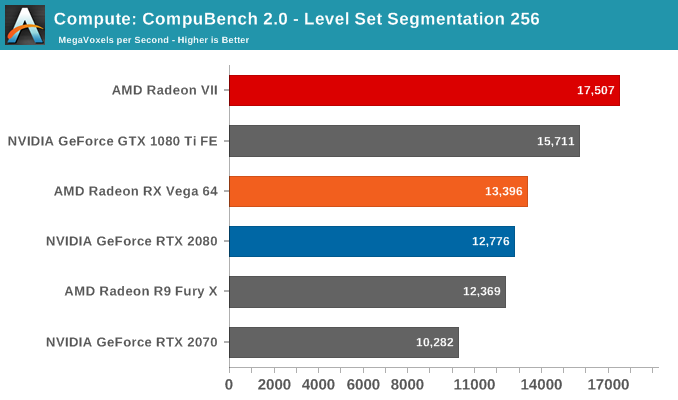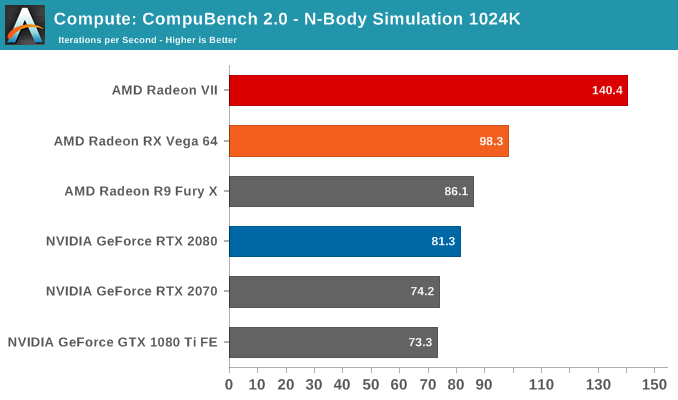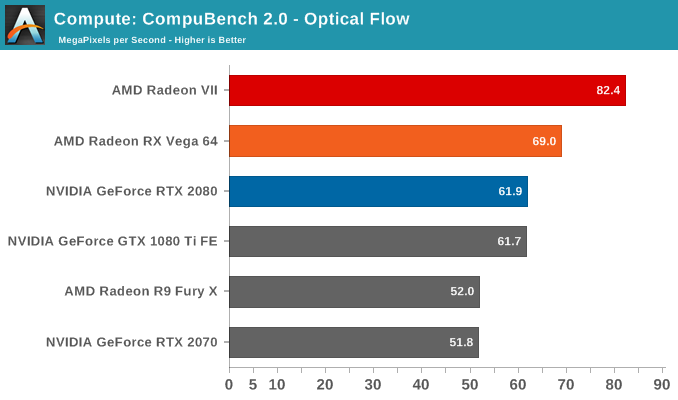- Feb 2, 2009
- 14,001
- 3,357
- 136
Compared again to Vega VII's jump over Vega 64, which had an entire node increase to use for efficiency improvements, TU116 it actually did a better job at improving efficiency over GP106, which was already an extremely efficient design.
Vega 20 is just a Vega 10 with a few adjustments ported from 14nm GloFo to 7nm TSMC. Transistor count between Vega 10 and Vega 20 is almost the same (12.5B vs 13.23B). Even with the same transistor count and less CUs than Vega 64 , the Radeon VII managed to gain 25% higher gaming performance at lower power than Vega 64.
Not only that but if you directly compare Vega 20 to TU104 they are competing in every metric. Same amount of Transistors, Same gaming performance, Vega 20 has higher compute performance FP64(except Tensor matrix) and TU104 may have higher RT performance (we still dont know how fast Vega 20 can do DXR).
On the other hand , the TU 116 (GTX1660Ti) has 50% more transistors than GP106 (GTX1060). Its 2.5 year later and uses 12nm vs 16Nm. After 2.5 years NVDIA managed to reach parity with Polaris in FP16 (mm2) and still have way lower FP64 throughput. Not to mention Polaris has less transistors than TU116 (5.7B for Polaris vs 6.6B for TU116).
From now on, both AMD and NVIDIA are allocating more and more transistors for compute (Machine learning etc) , so the perf/mm2 in Gaming will go down , much like Vega and Turing cards.
Moved all this tangential crud out of the 1660 review thread.
AT Moderator ElFenix
Last edited by a moderator:





